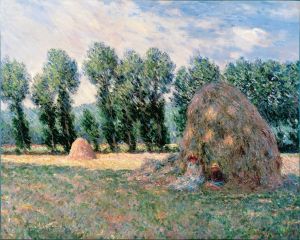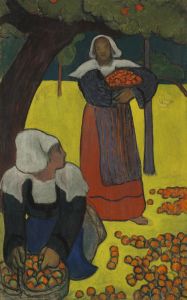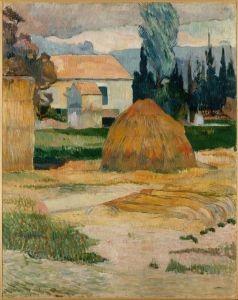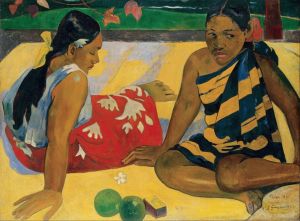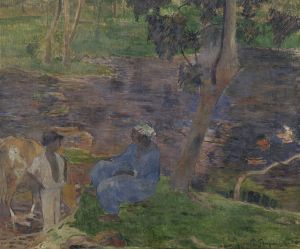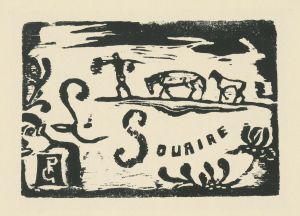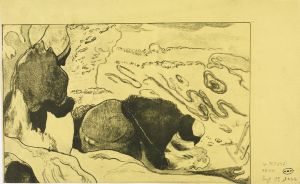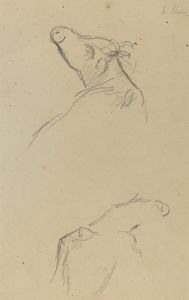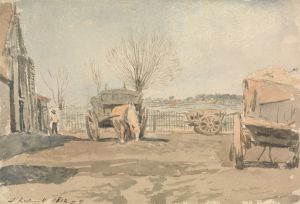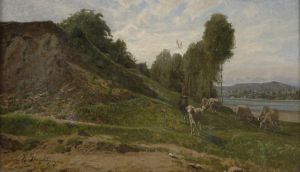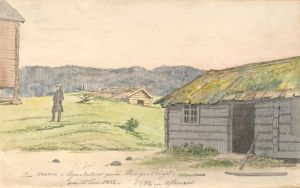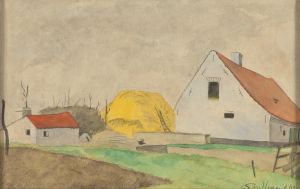
Haystacks in Brittany
A hand-painted replica of Paul Gauguin’s masterpiece Haystacks in Brittany, meticulously crafted by professional artists to capture the true essence of the original. Each piece is created with museum-quality canvas and rare mineral pigments, carefully painted by experienced artists with delicate brushstrokes and rich, layered colors to perfectly recreate the texture of the original artwork. Unlike machine-printed reproductions, this hand-painted version brings the painting to life, infused with the artist’s emotions and skill in every stroke. Whether for personal collection or home decoration, it instantly elevates the artistic atmosphere of any space.
Paul Gauguin's painting Haystacks in Brittany is a work that reflects the artist's deep engagement with the rural landscapes and traditional life of Brittany, a region in northwestern France. Created during the late 19th century, this painting is part of Gauguin's broader exploration of the themes of simplicity, nature, and the spiritual qualities of rural life, which he pursued during his stays in Brittany.
Gauguin first traveled to Brittany in 1886 and returned multiple times in the following years, finding inspiration in the region's unspoiled landscapes, distinctive culture, and the perceived authenticity of its rural communities. Brittany's isolation and its resistance to modern industrialization appealed to Gauguin, who sought to escape the urbanization and materialism of Paris. The artist was particularly drawn to the Pont-Aven area, which became a hub for artists seeking to explore new approaches to painting.
Haystacks in Brittany depicts a rural scene featuring haystacks, a common motif in agricultural landscapes. The painting showcases Gauguin's characteristic use of bold colors, simplified forms, and a flattened perspective, which were hallmarks of his evolving Post-Impressionist style. These stylistic choices reflect his desire to move beyond the naturalism of Impressionism and toward a more symbolic and expressive approach to art.
The painting is notable for its emphasis on the harmony between human activity and the natural environment. The haystacks, an essential element of rural life, symbolize the agricultural traditions and rhythms of the countryside. Gauguin's treatment of the subject matter conveys a sense of timelessness and serenity, aligning with his broader interest in capturing the spiritual essence of the places he painted.
During his time in Brittany, Gauguin became a leading figure in the Pont-Aven School, a group of artists who sought to break away from conventional artistic norms. His innovative techniques and ideas influenced many of his contemporaries and contributed to the development of Symbolism and the later emergence of modern art movements.
Today, Haystacks in Brittany is recognized as an important example of Gauguin's work during his Brittany period. It reflects his commitment to exploring new artistic directions and his fascination with the rural landscapes and cultural heritage of the region. The painting is housed in a public or private collection, though specific details about its current location may vary.
This artwork remains a testament to Gauguin's ability to transform ordinary scenes into evocative compositions that resonate with deeper meanings. It continues to be studied and appreciated for its artistic and historical significance.





